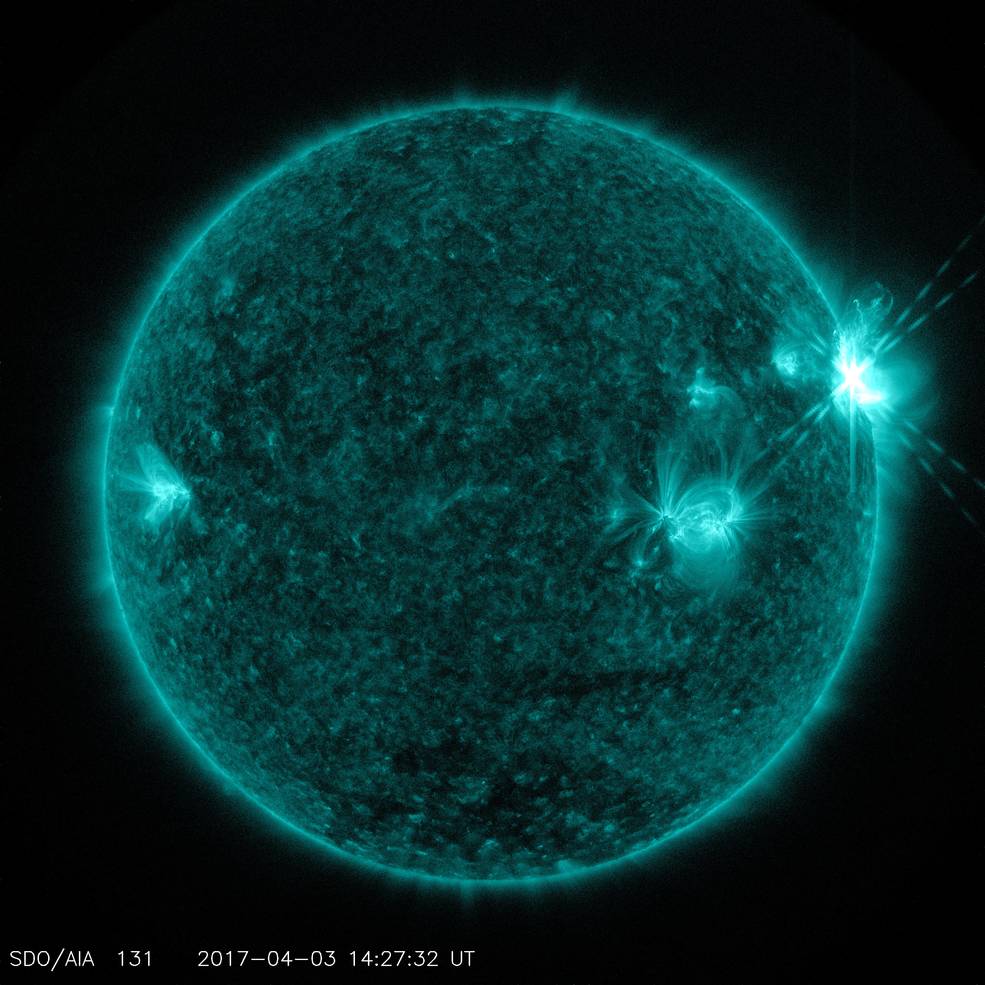Solar Blast! Sun Surprises with 3 Powerful Flares (Video)

The sun has unleashed three intense solar flares in just two days — each one stronger than the last — in an unexpected uptick in solar activity.
The flares began on Sunday (April 2), when the sun fired off a moderate, M5.3-class solar flare. A stronger, M5.7 solar flare followed later that same day. Then, today (April 3), the sun erupted with an M5.8 flare. NASA's Solar Dynamics Observatory spacecraft captured video of the flares as they occurred.
Monday's eruption marked the strongest solar flare of 2017, according to the space weather-tracking website Spaceweather.com.
"M-class flares are a tenth the size of the most intense flares, the X-class flares," NASA officials wrote in a statement. In addition to M- and- X-class flares, the sun can also release smaller, C-class flares and weaker solar storms.
Officials with Space Weather Prediction Center (SWPC) operated by the National Oceanic and Atmospheric Administration said this week's solar flares originated from the sunspot region known as Active Region 2644. This sunspot group is near the western limb (or edge of the sun as seen from Earth) and should take two days to fully rotate out of view, SWPC officials wrote in an update.
The uptick in solar activity comes amid a relatively quiescent phase of the sun's weather cycle, according to NASA. In late March, NASA images showed no sunspots on the star, suggesting that the sun was approaching the minimum-activity phase of its solar weather cycle, agency officials added.
"Solar flares are powerful bursts of radiation," NASA officials wrote in their statement. "Harmful radiation from a flare cannot pass through Earth's atmosphere to physically affect humans on the ground. However — when intense enough — they [flares] can disturb the atmosphere in the layer where GPS and communications signals travel."
Breaking space news, the latest updates on rocket launches, skywatching events and more!
According to Spaceweather.com, the three solar flares have triggered at least four significant shortwave radio blackouts.
"People who might have noticed these blackouts include ham radio operators and mariners using low-frequency rigs for communication at frequencies below 10 MHz," the website reported.
Email Tariq Malik at tmalik@space.com or follow him @tariqjmalik and Google+. Follow us @Spacedotcom, Facebook and Google+. Original article on Space.com.

Tariq is the award-winning Editor-in-Chief of Space.com and joined the team in 2001. He covers human spaceflight, as well as skywatching and entertainment. He became Space.com's Editor-in-Chief in 2019. Before joining Space.com, Tariq was a staff reporter for The Los Angeles Times covering education and city beats in La Habra, Fullerton and Huntington Beach. He's a recipient of the 2022 Harry Kolcum Award for excellence in space reporting and the 2025 Space Pioneer Award from the National Space Society. He is an Eagle Scout and Space Camp alum with journalism degrees from the USC and NYU. You can find Tariq at Space.com and as the co-host to the This Week In Space podcast on the TWiT network. To see his latest project, you can follow Tariq on Twitter @tariqjmalik.

